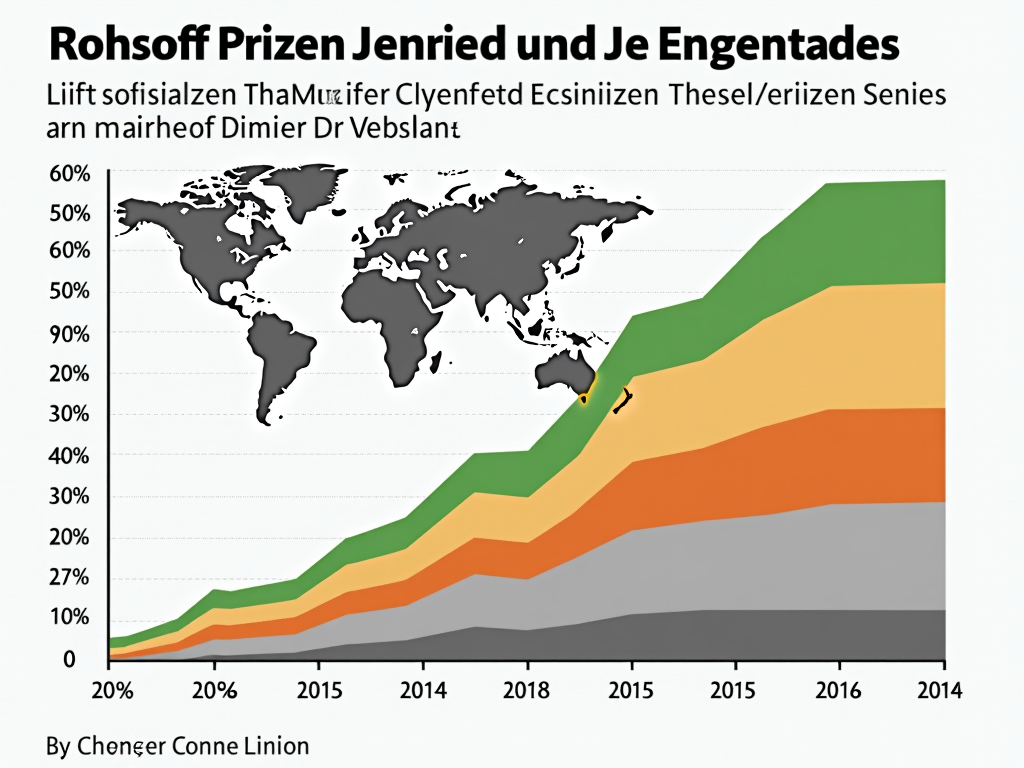Scarcity of raw materials has become a global dilemma affecting both price determination and production strategies across various industries. With rising prices and volatile markets, companies face the challenge of adapting their business models. This article highlights the impacts of scarcity on price determination and economic volatility, along with the specific challenges and opportunities that arise for various sectors.
Price Adjustments and Economic Fluctuations: The Impacts of Raw Material Scarcity

The impacts of raw material scarcity on global price determination and economic volatility are of fundamental importance. Various factors contribute to this complex dynamic, including rising demand for limited resources and various external factors. When raw materials become scarce, prices almost inevitably rise. One example of this evolution can be observed in agriculture, where rising fertilizer prices have significantly increased farmers’ operational costs. These precarious conditions continually test companies, as they face higher production costs that threaten both their competitiveness and market penetration.
The volatility of raw material prices is another critical element in this interplay. These prices often fluctuate significantly, influenced by geopolitical tensions, weather conditions, and speculative market developments. These price fluctuations create economic uncertainty that complicates investment decisions and strategic planning. Notably, the automotive industry is a striking example of supply chain disruptions due to raw material shortages. Such disruptions delay production, increase operational costs, and destabilize the market position of many companies.
The economic uncertainty generated by the scarcity of raw materials forces companies to develop proactive strategies. To cope with these uncertainties, they seek to diversify their dependencies by exploring alternative sources or investing in digital technologies that allow for better monitoring and adaptation. An example of the immediate sectoral impacts is the battery industry’s challenges due to the Congolese cobalt export ban. This measure has led to significant shortages and cost increases that weigh heavily on small and medium-sized enterprises.
Companies that can tackle these challenges through constant innovation and adaptations can gain competitive advantages. At the same time, investments in technological advancements enable more efficient resource use and the development of alternative materials. Synthesizing these dynamics, it becomes evident that raw material scarcity has a broad and profound impact on the economic landscape. Companies and governments must adopt proactive measures to effectively address these challenges and ensure stability in an uncertain global market.
Raw Material Scarcity: Managing Challenges and Seizing Opportunities in Industry

Raw material scarcity poses fundamental challenges for many industries, leading to price fluctuations and dramatic cost increases. In particular, the construction sector and the automotive industry are forced to rapidly adapt to rising raw material prices, which puts pressure on profit margins. Similarly, geopolitical tensions create uncertainties in supply chains, which can cause delays and interruptions in production. These geopolitical factors increase the risks faced by companies today.
Another often-overlooked issue is the lack of skilled personnel, which is exacerbated by raw material scarcity. Many industries, particularly the construction sector, struggle to find qualified personnel, which further deepens the supply shortages. At the same time, high energy costs required for the extraction and processing of raw materials further increase production costs.
However, opportunities also emerge from necessity. The accelerated development of new technologies and the adoption of innovative production methods are positive side effects of these challenges. Increased investment in recycling technologies and the circular economy demonstrates that sustainable solutions not only reduce dependence on raw materials but can also offer economic advantages. Here, the plastic and construction sectors play a central role, where digital technologies can enhance efficiency and reduce costs.
Furthermore, diversifying raw material sources offers a way to mitigate the risk of price fluctuations and establish more stable supply chains. Companies that invest early in such sustainable and innovative approaches create long-term competitive advantages. In this way, they can not only penetrate the market but also flexibly adapt to future market conditions.
Finally, the changes caused by raw material scarcity serve as catalysts for progress. The resulting capacity for innovation allows companies to adapt to a changing world and offers the opportunity to establish both economic and ecological standards.